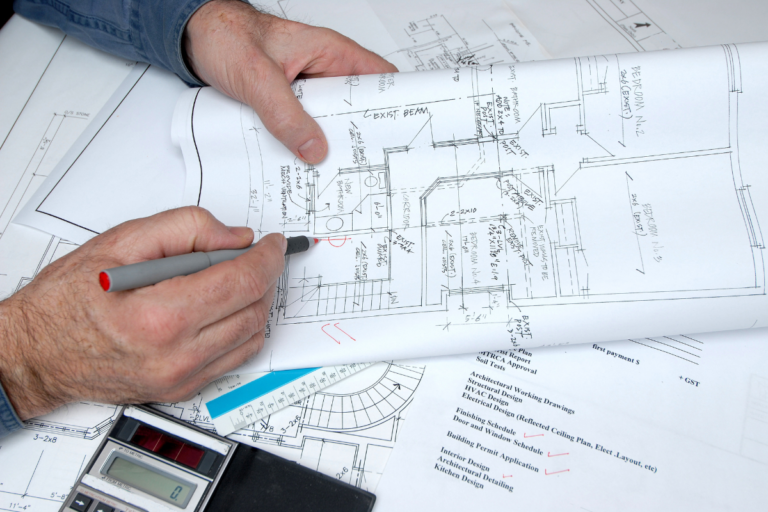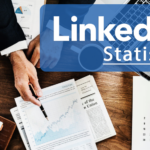Are you wondering, where is my resume on LinkedIn?
You’re not alone.
LinkedIn is a powerful tool for job seekers, but it can be confusing to navigate.
Fortunately, finding your resume on LinkedIn is a straightforward process.
To view your resume on LinkedIn, log in to your account and click on the “Jobs” tab in the navigation menu.
From there, select “My Jobs” in the sidebar to see any jobs you have applied for and the status of your applications.
You can also upload your resume to LinkedIn and display it on your profile, making it easy for potential employers to find and review your qualifications.
Adding your resume to LinkedIn can help you stand out in a crowded job market.
It allows recruiters and hiring managers to quickly access your work history, skills, and experience, and can increase your chances of being contacted for an interview.
So if you haven’t already, take a few minutes to upload your resume to LinkedIn and make sure it’s up-to-date.
Post Contents
Where is My Resume on LinkedIn?

If you’re wondering where your resume is on LinkedIn, don’t worry! It’s easy to find.
Your resume is actually stored in your LinkedIn profile, so you can access it anytime you need it.
Here’s how to find it:
Profile Overview
To view your LinkedIn profile, log in to your account and click on the “Profile” tab in the navigation menu.
Here, you’ll see an overview of your profile, including your name, profile picture, headline, and summary.
You can also see your current and past work experience, education, skills, and more.
Add Profile Section
If you haven’t already added your resume to your LinkedIn profile, you can easily do so by adding a new profile section.
To do this, click on the “Add profile section” button on your profile page.
From here, you can select “Featured” and then “Media.”
This will allow you to upload your resume as a PDF or other file type.
Featured Section
Once you’ve added your resume to your profile, it will appear in the “Featured” section of your profile.
This is a great place to showcase your work and achievements, and it’s also where you can access your resume anytime you need it.
Overall, finding your resume on LinkedIn is easy and straightforward.
By following these simple steps, you can ensure that your resume is always up-to-date and easily accessible to potential employers.
Uploading Your Resume
If you’re looking to upload your resume to LinkedIn, you’re in luck! LinkedIn offers several methods to upload your resume, including uploading it to job applications as well as displaying it on your profile.
Here’s how to do it.
Document Formats
LinkedIn accepts resumes in a variety of document formats, including DOC, DOCX, and PDF.
If your resume is in a different format, you may need to convert it to one of these formats before uploading it.
Upload Process
To upload your resume to LinkedIn, follow these steps:
- Log in to your LinkedIn account and navigate to your profile page.
- Click the “Add profile section” button at the top of your profile.
- From the dropdown menu, select “Featured”.
- Click the “Add featured” button.
- Select “Media” from the dropdown menu.
- Click the “Upload” button and select your resume file.
- Add a title and description for your resume.
- Click “Save” to upload your resume to your LinkedIn profile.
Once you’ve uploaded your resume to LinkedIn, it will be visible to anyone who views your profile.
You can also use your uploaded resume to apply for jobs on LinkedIn by selecting it from the list of documents available when applying for a job.
That’s all there is to it!
Uploading your resume to LinkedIn is a quick and easy process that can help you stand out to potential employers.
Visibility of Your Resume

When it comes to your LinkedIn profile, you may be wondering where your uploaded resume is visible.
In this section, we’ll cover the different areas where your resume may be visible and who can see it.
Public Profile
If you’ve uploaded your resume to your LinkedIn profile, it will be visible to anyone who views your public profile.
This means that if you have your profile set to public, anyone who searches for your name on LinkedIn or comes across your profile through a search engine will be able to see your resume.
Recruiters
If you’ve applied for a job on LinkedIn and uploaded your resume as part of your application, the employer who posted the job will be able to see your resume.
Additionally, if you’ve set your job-seeking preferences to “actively looking,” recruiters who use LinkedIn’s
Recruiter tool may also be able to see your resume.
It’s important to note that if you’ve uploaded your resume to your profile, recruiters who are not connected to you will not be able to see it unless you specifically apply for a job they’ve posted.
Privacy
If you’re concerned about your resume being visible to the wrong people, you have a few options.
First, you can choose not to upload your resume to your profile at all.
Second, you can upload your resume but set your profile to private so that only your connections can see it.
Finally, if you’re actively looking for a job but don’t want your current employer to see that you’re job searching, you can use LinkedIn’s Open Candidates feature.
This feature allows you to signal to recruiters that you’re open to new opportunities without your current employer seeing that you’re job searching.
Data Privacy
LinkedIn takes data privacy seriously and allows you to control who can see your resume.
If you’ve uploaded your resume to your profile, you can choose to show or hide it from your public profile.
Additionally, you can choose to show or hide your job-seeking preferences from recruiters.
Optimizing Your LinkedIn Profile
If you’re looking to maximize your chances of getting noticed by recruiters and potential employers on LinkedIn, it’s important to optimize your profile.
This means making sure that your profile is complete, accurate, and showcases your skills and accomplishments in the best possible light.
About Section
The About section of your LinkedIn profile is one of the most important parts of your profile.
This is where you can showcase your personality, your values, and your unique selling points.
Make sure to write a compelling summary that highlights your strengths and accomplishments, and make sure to include relevant keywords that will help your profile show up in searches.
Skills
Your Skills section is another important part of your profile.
This is where you can showcase your areas of expertise and the skills that you bring to the table.
Make sure to include a mix of hard and soft skills, and make sure that your skills are relevant to your target industry or job.
Accomplishments
Your Accomplishments section is where you can showcase your achievements and certifications.
This is a great place to highlight any awards, publications, or other notable accomplishments that you’ve achieved in your career.
Make sure to include relevant details and metrics that demonstrate the impact that you’ve had in your previous roles.
Applying for Jobs with LinkedIn

If you’re looking for a job, LinkedIn can be a great place to start your search.
You can find job listings, apply for positions, and even upload your resume to make it easier for recruiters to find you.
In this section, we’ll cover how to apply for jobs using LinkedIn, including the Easy Apply feature and application settings.
Easy Apply
One of the easiest ways to apply for jobs on LinkedIn is by using the Easy Apply feature.
This feature allows you to apply for a job with just a few clicks, without having to fill out a lengthy application form.
To use Easy Apply, simply follow these steps:
- Find a job listing that you’re interested in.
- Click the “Apply” button on the job listing.
- If the job has the Easy Apply feature, you’ll see an “Apply with LinkedIn” button. Click this button.
- Review the information that LinkedIn will send to the employer, and make any necessary changes.
- Click the “Submit application” button.
That’s it!
You’ve now applied for the job using the Easy Apply feature.
Application Settings
If you want to customize your job application settings on LinkedIn, you can do so by following these steps:
- Click the “Jobs” tab on your LinkedIn homepage.
- Click the “Preferences” button on the right-hand side of the page.
- Under “Job application settings,” you can choose to turn on or off the following settings:
- “Let recruiters know you’re open to opportunities”
- “Automatically save job applications”
- “Automatically notify your connections when you apply for a job”
- You can also choose to customize your job application message by clicking the “Customize your message” button.
By customizing your job application settings, you can make it easier for recruiters to find you and ensure that your job applications are saved and tracked properly.
Additional Features
LinkedIn offers several additional features that can help you make the most of your profile and resume.
In this section, we’ll explore some of these features and how you can use them to your advantage.
LinkedIn Posts
One of the best ways to showcase your skills and experience on LinkedIn is by creating posts.
You can start a post by clicking on the “Start a Post” button on your LinkedIn homepage.
From there, you can write a short blurb about your experience or share an interesting article or piece of content related to your field.
Publishing posts on LinkedIn can help you establish yourself as a thought leader in your industry and attract the attention of potential employers or clients.
Make sure to include relevant hashtags and tag any relevant individuals or companies in your post to increase its visibility.
Building a Resume on LinkedIn
Did you know that you can build a resume directly on LinkedIn? This feature allows you to create a professional-looking resume using your LinkedIn profile information.
To get started, click on the “Add Profile Section” button on your profile and select “Featured.”
From there, you can choose the “Media” option and upload your resume.
Building a resume on LinkedIn can save you time and effort when applying for jobs, as you can simply share your LinkedIn profile with potential employers instead of having to create a separate resume.
Plus, the resume builder feature ensures that your resume looks polished and professional.
Storing Resumes on Cloud
Another great feature of LinkedIn is the ability to store your resumes on the cloud.
This means that you can access your resume from anywhere, as long as you have an internet connection.
To do this, simply upload your resume to a cloud storage service like Dropbox or Google Drive, and then link to it from your LinkedIn profile.
Storing your resume on the cloud can be especially helpful if you frequently apply for jobs on the go or need to update your resume frequently.
Plus, it ensures that you always have a backup copy of your resume in case your computer crashes or is lost.
By taking advantage of these additional features on LinkedIn, you can make your profile and resume stand out to potential employers and clients.
So why not give them a try today?
Key Takeaways
If you’re wondering where your resume is on LinkedIn, there are a few key takeaways to keep in mind.
First and foremost, having a strong, well-written resume is essential to making a good impression on potential employers and hiring managers.
This is especially true if you’re looking for a job in a competitive field or industry.
One of the best ways to make your resume stand out on LinkedIn is to include your skills at the top of your profile.
This allows viewers and potential employers to quickly scan your skills and see if you have what they’re looking for.
Additionally, you can upload your resume to your LinkedIn profile as a featured media item, making it easy for employers to access and review.
Another important thing to keep in mind is that your LinkedIn profile should be impressive and professional.
This means that you should take the time to fill out your profile completely, including your work history, education, and any relevant experience or certifications.
You should also use a professional headshot for your profile picture, and make sure that your profile is free of any typos or errors.
When it comes to interviews, having a strong LinkedIn profile and resume can be a huge advantage.
Employers and hiring managers will often review your LinkedIn profile before inviting you in for an interview, so it’s important to make sure that your profile is up-to-date and showcases your skills and experience in the best possible light.
Overall, if you’re looking to make a good impression on potential employers and stand out in a crowded job market, having a strong LinkedIn profile and resume is essential.
By following these key takeaways and taking the time to create a professional, impressive profile, you can increase your chances of landing your dream job.






























